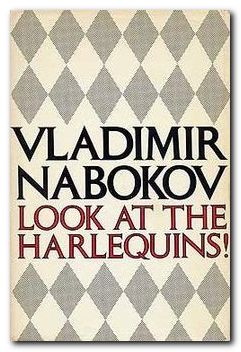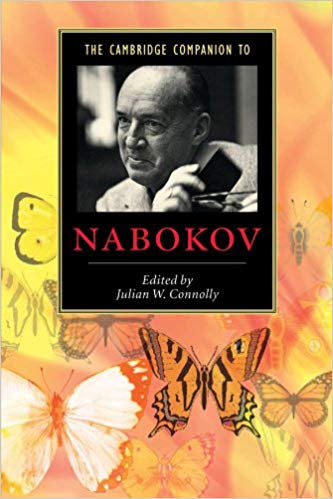tutorial, commentary, study resources, plot summary, links
Look at the Harlequins! was first published in the United States in 1974 by McGraw-Hill, then in the United Kingdom in 1975 by Wiedenfeld and Nicolson. It was the last of Nabokov’s novels to be published during his own lifetime, and was only superseded by his partial work-in-progress, The Original of Laura, which was published posthumously in 2009.
first American edition
Look at the Harlequins! – critical commentary
This book was written in the final stages of Nabokov’s career as a novelist. He had taken his famously playful style to an almost ne plus ultra of literary self-indulgence in Ada or Ardor: A Family Chronicle in 1969, but Look at the Harlequins! wrings a final gasp of self-referentiality out of both his own life and his own books – both of which form the substance of this lightweight confection.
Vadim (the fictional character) has a life history that closely parallels that of Vladimir Nabokov. Vadim Vadimovich was born in Russia, displaced by the Bolshevik revolution, exiled in Paris and the south of France, and earned his living by writing novels and poetry, mixing amongst emigre literary circles, and later moving from France to a college professorship in America. The parallels between the fictional construction and Nabokov’s own life are quite obvious and do not need to be spelled out.
What is of interest is ‘what does he make of this fictionalisation of his own life?’ And the answer is – not very much. The work includes all sorts of biographical trivia: Nabokov’s interest in chess and its problems, his interest in butterflies (which he transfers onto another character), and his near obsession with rape and young girls.
Nabokov and paedophilia
When Nabokov wrote the afterward to Lolita he claimed that the idea for its principal subject had been inspired by a newspaper report of a sketch produced by an ape in the Jardin des Plantes showing the bars of its cage. This round-about appeal to our sympathy deflected attention from two uncomfortable facts.
The first uncomfortable fact is that the novel’s protagonist, Humbert Humbert, is not trapped or imprisoned by his obsession with under-age girls: he acts fully conscious of his desires with the free will of an adult. The second fact is that Nabokov had been writing about older men having sexual encounters with young girls ever since his earliest works – such as A Nursery Tale (1926) and <Laughter in the Dark (1932). Moreover, he wrote a whole novella based on that theme, The Enchanter (1939) and was still including mention of paedophilia in works as late as Ada or Ardor (1969) and Transparent Things (1972).
Readers taken in by his ‘explanation’ should heed the advice of D.H.Lawrence – to ‘Trust the tale, not the teller’. Nabokov was a master of manipulating his own public image – aided and abetted by both his wife and son. Look at the Harlequins! is almost defiantly, brazenly packed with episodes of an older man (Vadim, in this case) having sexual encounters with young girls – from the child Dolly Borg to his own daughter Isabella and her school friend at the end of the novel who – as he deliberately points out – is forty-five years younger than him.
Self-referentiality
The level of self-referentiality in this novel is Nabokov’s idea of an extended joke. He creates a fictional narrative which is closely modelled on elements of not only his own biography, but also the other works of fiction he has produced. Thus when Vadim refers to his first fictional work written in English, See Under Real (1939) the ‘knowing’ reader realises that Nabokov is alluding to The Real Life of Sebastian Knight which was indeed Nabokov’s first work written in English. Similarly, the work which makes Vadim rich is A Kingdom by the Sea (1962) the very title of which is taken from Lolita (1958) which catapulted Nabokov to fame when it was first published.
At one point Vadim gives an extended account of his novel The Dare which is a parody of Nabokov’s 1937 novel The Gift (Russian title, Dar~ – hence a multi-lingual pun). Vadim’s account of The Dare is as follows:
The novel begins with a nostalgic account of a Russian childhood (much happier, though not less opulent than mine). After that comes adolescence in England (not unlike my own Cambridge years); then life in émigré Paris, the writing of a first novel (Memoirs of a Parrot Fancier) and the tying of amusing knots in various literary intrigues. Inset in the middle part is a complete version of the book my Victor wrote ‘on a dare’ : this is a concise biography and critical appraisal of Fyodor Dostoyevski, whose politics my author finds hateful and whose novels he condemns as absurd …
Thus we have a real author (Vladimir Nabokov) withing a novel (Look at the Harlequins!) which is narrated by a fictional character (Vadim) who summarises one of his own novels (The Dare) which is written by a fictional character called Victor, based on the events of his fictional life – but which is actually a pastiche of Nabokov’s own 1936 novel The Gift which was based losely on the events of his own life. Nabokov even repeats this conceit later in Look at the Harlequins with a similar account of A Kingdon by the Sea which is a parody of Lolita. Self-referentiality does not come much thicker than this.
The problem with this technique is that rather like the obsessive puns and wordplay in Nabokov’s later works, the literary gesture loses its impact after a very few iterations, and rapidly becomes annoying. Moreover, it is an elitist device in that anyone who does not know Nabokov’s personal biography and his works of fiction is excluded from the supposedly amusing purpose of these references. Per contra, readers who know Nabokov’s work well have nothing new to learn from them.
The other problem connected with this auto and pseudo-biographical ‘playfulness’ is that it dilutes any possibility of the novel having a central theme or core subject. If there is any principal issue in Look at the Harlequins! it is ‘fake biography’ – which is neither amusing, interesting, nor important.
The unreliable narrator
Nabokov was very fond of using the device of an unreliable narrator – someone telling a story whose account is gradually revealed to be unsound, skewed, inaccurate, or even a pack of lies. His un-named narrator in The Eye (1930) manages to invent his own double, misjudge other characters, and fail to recognise that the other people in the story do not like him. Nabokov’s skill is in presenting the unreliable account of events in this novella in such a way that the reader is able to work out the truth of what is happening, behind the misleading surface account of events.
Later in his novel Pale Fire (1962) he has a narrator who edits, comments on, and interprets another man’s poem in such a way that the reader eventually realises that the interpretation is completely wrong and the editor is quite mad.
The Vadim Vadimovich of Look at the Harlequins! is closely related to such narrators. We only have his account of events, and he is obviously not reliable. His description of his spatial inabilities (which is very overdone) is a clear sign that he is neurotic, and he himself reveals that some of the scenes he describes are inventions.
He claims that he has a mental instability that he must confess to any women he is about to marry, but this is clearly an abberation invented by Nabokov which is never really convincing. Moreover, Vadim is not unreliable in any consistent manner. He refuses the opportunity to learn details of his first wife’s infidelity following her death, but in the very next chapter he acknowledges that the letter she showed him was from her lover.
Nabokov acknowledges within the text that there are rules in narratives: “The I of the book / Cannot die in the book”. In other words, if someone is presenting a narrative as a first person narrator, the story cannot include the death of the narrator. But similarly, if a narrator pretends to ignorance of some matter at one stage of the story, they cannot acknowledge the truth of it at a later stage – because first person narrators are in full possession of the facts at the outset, when they begin to compose a narrative. Other writers have fallen foul of this fictional trap when using first person narrators – most noticeably Joseph Conrad and Ford Maddox Ford.
Look at the Harlequins! – study resources
![]() Look at the Harlequins! – Penguin Classics- Amazon UK
Look at the Harlequins! – Penguin Classics- Amazon UK
![]() Look at the Harlequins! – Penguin Classics – Amazon US
Look at the Harlequins! – Penguin Classics – Amazon US
![]() Look at the Harlequins! – Penguin Classics – Amazon UK
Look at the Harlequins! – Penguin Classics – Amazon UK
![]() Look at the Harlequins! – Penguin Classics – Amazon US
Look at the Harlequins! – Penguin Classics – Amazon US
![]() Look at the Harlequins! – Library of America – Amazon UK
Look at the Harlequins! – Library of America – Amazon UK
![]() Look at the Harlequins! – Library of America – Amazon US
Look at the Harlequins! – Library of America – Amazon US
![]() The Cambridge Companion to Nabokov Amazon UK
The Cambridge Companion to Nabokov Amazon UK
![]() Vladimir Nabokov: The Russian Years – Biography: Vol 1
Vladimir Nabokov: The Russian Years – Biography: Vol 1
![]() Vladimir Nabokov: American Years – Biography: Vol 2
Vladimir Nabokov: American Years – Biography: Vol 2
![]() Zembla – the official Nabokov web site
Zembla – the official Nabokov web site
![]() The Paris Review – Interview with Vladimir Nabokov
The Paris Review – Interview with Vladimir Nabokov
![]() First editions in English – Bob Nelson’s collection
First editions in English – Bob Nelson’s collection
![]() Vladimir Nabokov at Wikipedia – biographical notes, links
Vladimir Nabokov at Wikipedia – biographical notes, links
![]() Vladimir Nabokov at Mantex – tutorials, web links, study materials
Vladimir Nabokov at Mantex – tutorials, web links, study materials
Look at the Harlequins! – plot summary
Part One
1 Vadim Vadimovich arrives at the Cote d’Azur villa of his old university colleague Ivor Black, an actor and director.
2 Vadim recalls his precocious erotic puberty, his aristocratic connections, and his escape from Russia following the Bolshevik revolution. In England he is taken up by an aristocratic sponsor, Count Starov.
3 At the villa, Vadim meets Black’s sister Iris, who acts out charades with Ivor, pretending to be a deaf mute
4 Vadim gives an account of an obsessive nocturnal fear from which he suffers. He consults a psychiatrist, who recommends a dentist – and then Vadim reveals that these scenes are not real but inventions.
5 Vadim discusses literature with Iris in the garden of the villa. His memoir reveals his ambition whilst at Cambridge University to return to a post-revolutionary Russia as a famous writer. He writes and translates poems for Iris.
6 Vadim observes ‘nymphets’ on the beach. Iris acts and talks in a provocative manner. He contemplates the uneven nature of his sun tan, then inspects his naked body in Iris’s bedroom mirror. He plans to propose to Iris the next day.
7 Vadim and Iris walk to the beach, meeting the pianist Kanner on the way, collecting butterflies. Vadim recalls two youthful occasions of cramp seizures whilst swimming.
8 As a prelude to marriage, Vadim tries to explain to Iris his ‘mental aberarration’ concerning spatial orientation, but Iris simply explains it away for him.
9 In the garden at sunset Ivor does a comic imitation of Vadim to amuse his guests. Next day, when Ivor goes off fishing, Vadim takes Iris to bed. He recalls a similar scene he witnessed voyeuristically as a young boy.
10 Vadim and Iris get married and are visited by his patron Count Starov who quizzes Vadim about his finances and his intentions.. Vadim and Iris move to Paris, where eventually Vadim suffers from jealousy. He quizzes Iris about her past and begins to suspect her of infidelity.
11 Iris cannot learn Russian and has no access to Vadim’s writing. She starts writing a detective novel. Vadim publishes his first novel and starts the second. Iris goes briefly for Russian lessons with Nadezhda Starov, who has a dashing husband.
12 Iris gives Vadim a badly written and badly translated letter written to her fictional heroine for his comment. Vadim believes it might be from a real admirer – but screws it up and throws it away.
13 Ivor returns from the USA and goes to dinner with Vadim and Iris, following which Nadezhda’s husband turns up in the street, kills Iris, then shoots himself. When Nadezhda turns up for her husband’s funeral she offers to tell Vadim ‘everything’ – but he prefers not to know about what is obviously his wife’s infidelity.
Part Two
1 Following his wife’s death Vadim goes to stay with his friend Stephan Stephanov and mixes with other Russian emigres. He also has a very dubious relationship with a very young girl called Dolly Borg.
2 After describing his composition techniques, he hires a typist Lyuba Savich, who turns out to be an avid fan of his works. However, even though she is very attractive, he gets rid of her.
3 He continues to complain about his spatial ‘madness’, continues writing, gives lectures, and starts to look for a replacement typist.
4 He visits Oksman, manager of a Russian emigre bookshop in Paris, and former revolutionary. Oksman compliments Vadim on his novels, but gets their titles wrong.
5 Vadim’s second typist is Annette Blagovo, who makes lots of mistakes and criticises his work. She does not understand his writing at all.
6 Vadim describes a dream of his younger self and Annette in two beds in the same room. When he gets into Annette’s bed, an attractive maid enters the room, laughing.
7 Vadim writes Annette an absurdly detailed letter describing his difficulty recreating topographical space in his memory, which he regards as ‘madness’. He feels obliged to warn her about this , before making a proposal of marriage. But she agrees to become engaged anyway.
8 He goes to meet her parents to announce his intentions. Then, despite her inexperience and prudishness, he makes a clumsy and unsuccessful attempt to seduce her.
9 Vadim refuses to get married in grand style. His literary success continues in the late 1930s, and his work begins to appear in English.
10 He complains about translations of his work appearing in the USA and England, and then in the late 1930s he begins writing in the English language. He recalls the language he learned in his childhood, discusses the perils of switching from one language to another, then he goes to America.
Part Three
1 In America Vadim obtains a fellowship in European literature at Quirn University, and his writing becomes more widely known.
2 He and Annette have a child (Isabella) but the marriage rapidly goes cold. On a trip to New York City he meets Dolly Borg whom he knew as a child in Paris. She visits his office at Quirn, and they begin a sexual relationship.
3 Dolly arranges a rendezvous in a friend’s apartment in New York. When they arrive the meeting becomes a nightmare fantasy of thwarted expectations and bad taste. Vadim seems to collapse and is taken to hospital.
4 His wife Annette finds out about his affair with Dolly and leaves him She writes a letter in pro-Soviet tones and demands support payments.
Part Four
1 Vadim takes a sabbatical year from Quirn, buys a car, and drives West. After a year’s wandering he returns to the University and to new quarters. He begins an affair with the wife of his Head of Department.
2 There is a local tornado, after which he prepares his house for the arrival of his daughter Bel. She turns out to be clever and sexually precocious.
3 They go touring in his car together. She writes poetry which he pretends to enjoy, and there is a lot of suggestive foreplay. He is addressing his narrative to one of her school friends, Louise.
4 People at Quirn begin to question the nature of his relationship with Bel. He is invited to a party where he makes a public announcement about his ‘disability’ – prior to proposing to Louise, who says she will marry him nevertheless.
5 Louise calls round next morning at breakfast and meets Bel – with whom there is something of a rivalry and standoff.
6 Louise introduces lots of vulgarity into his household, and the relationship with Bel gets even worse.
7 Bel is sent to a Swiss finishing school and Vadim claims to miss her, whilst working on the novel which is to bring him fame and fortune (A Kingdom by the Sea. His relationship with Louise gets worse, and she makes contact with a former lover.
Part Five
1 Bel marries a young American and elopes to Russia. Vadim’s novel is a big success. He receives word from an intermediary that Bel needs his help. He grows a beard and obtains a false passport.
2 He takes a flight to Moscow and a connection to St Petersburg, the city of his birth. He is followed by an agent of some sort. But when he meets his informant she is a partly deranged woman who tells him that Bel has been taken away by her husband.
3 He flies back to Paris en route to New ~York. At Orly airport he is intercepted by the agent, who turns out to be a Soviet writer and an apparatchik. He insults Vadim for ‘betraying’ Russia in his writings – and Vadim punches him on the nose.
Part Six
1 Vadim resigns from his post at Quirn, and whilst clearing out his belongings meets a classmate of his daughter, forty-five years younger than him.
2 They travel together to Europe. Vadim gives her the index cards on which he has written his latest novel Ardis. He then goes for a walk, reflecting on what a successful writer he is. But at the end of the walk he finds it impossible to turn back.
Part Seven
1 Vadim has some form of mental seizure which he records in fantasmagoric images
2 He is transported to a hospital, suffering from some sort of paralysis or dementia. He perceives life as a series of lurid images composed from elements of his former life.
3 When he partially recovers he cannot remember his family name.
4 He recuperates in another hospital, joined by his still un-named fourth wife-to-be. She has read his confessional fragments from Ardis, and explains that his mental dilemma is based on a false premise.
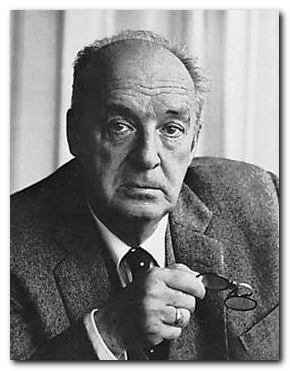
Vladimir Nabokov
Look at the Harlequins – principal characters
| Vadim Vadimovich N. | the narrator and protagonist |
| Ivor Black | Vadim’s friend from Cambridge – an actor and director |
| Count Starov | Vadim’s rich Russian patron |
| Iris | Black’s sister, Vadim’s first wife |
| Kanner | a pianist who collects butterflies |
| Stephan Stephanov | Vadim’s friend in Paris |
| Lyuba Savich | Vadim’s first typist |
| Oksman | Russian bookshop owner in Paris |
| Annette Blogovo | Vadim’s second typist and second wife |
| Isabel (Bel) | Vadim and Annette’s daughter |
| Dolly Borg | grand-daughter of Vadim’s Paris friend |
| Louise | school friend of Bel, Vadim’s third wife |
| Waldemar Exkel | Vadim’s Baltic assistant at Quirm |
| Gerrard Adamson | Chair of English at Quirm |
| Louise Adamson | his wife, Vadim’s lover |
| — | a school friend of Bel, and Vadim’s fourth wife |
Other work by Vladimir Nabokov
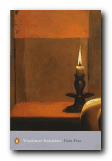 Pale Fire is a very clever artistic joke. It’s a book in two parts – the first a long poem (quite readable) written by an American poet who we are encouraged to think of as someone like Robert Frost. The second half is a series of footnoted commentaries on the text written by his neighbour, friend, and editor. But as we read on the explanation begins to take over the poem itself, we begin to doubt the reliability – and ultimately the sanity – of the editor, and we end up suspended in a nether-world, half way between life and illusion. It’s a brilliantly funny parody of the scholarly ‘method’ – written around the same time that Nabokov was himself writing an extensive commentary to his translation of Pushkin’s Eugene Onegin.
Pale Fire is a very clever artistic joke. It’s a book in two parts – the first a long poem (quite readable) written by an American poet who we are encouraged to think of as someone like Robert Frost. The second half is a series of footnoted commentaries on the text written by his neighbour, friend, and editor. But as we read on the explanation begins to take over the poem itself, we begin to doubt the reliability – and ultimately the sanity – of the editor, and we end up suspended in a nether-world, half way between life and illusion. It’s a brilliantly funny parody of the scholarly ‘method’ – written around the same time that Nabokov was himself writing an extensive commentary to his translation of Pushkin’s Eugene Onegin.
![]() Buy the book at Amazon UK
Buy the book at Amazon UK
![]() Buy the book at Amazon US
Buy the book at Amazon US
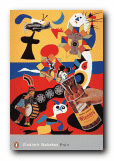 Pnin is one of his most popular short novels. It deals with the culture clash and catalogue of misunderstandings which occur when a Russian professor of literature arrives on an American university campus. Like many of Nabokov’s novels, the subject matter mirrors his life – but without ever descending into cheap autobiography. This is a witty and tender account of one form of naivete trying to come to terms with another. This particular novel has always been very popular with the general reading public – probably because it does not contain any of the dark and often gruesome humour that pervades much of Nabokov’s other work.
Pnin is one of his most popular short novels. It deals with the culture clash and catalogue of misunderstandings which occur when a Russian professor of literature arrives on an American university campus. Like many of Nabokov’s novels, the subject matter mirrors his life – but without ever descending into cheap autobiography. This is a witty and tender account of one form of naivete trying to come to terms with another. This particular novel has always been very popular with the general reading public – probably because it does not contain any of the dark and often gruesome humour that pervades much of Nabokov’s other work.
![]() Buy the book at Amazon UK
Buy the book at Amazon UK
![]() Buy the book at Amazon US
Buy the book at Amazon US
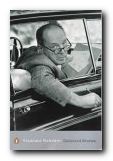 Collected Stories Nabokov is also a master of the short story form, and like many writers he tried some of his literary experiments there first, before giving them wider reign in his novels. This collection of sixty-five complete stories is drawn from his entire working life. They range from the early meditations on love, loss, and memory, through to the later technical experiments, with unreliable story-tellers and the games of literary hide-and-seek. All of them are characterised by a stunning command of language, rich imagery, and a powerful lyrical inventiveness.
Collected Stories Nabokov is also a master of the short story form, and like many writers he tried some of his literary experiments there first, before giving them wider reign in his novels. This collection of sixty-five complete stories is drawn from his entire working life. They range from the early meditations on love, loss, and memory, through to the later technical experiments, with unreliable story-tellers and the games of literary hide-and-seek. All of them are characterised by a stunning command of language, rich imagery, and a powerful lyrical inventiveness.
![]() Buy the book at Amazon UK
Buy the book at Amazon UK
![]() Buy the book at Amazon US
Buy the book at Amazon US
© Roy Johnson 2015
More on Vladimir Nabokov
More on literary studies
Nabokov’s Complete Short Stories
